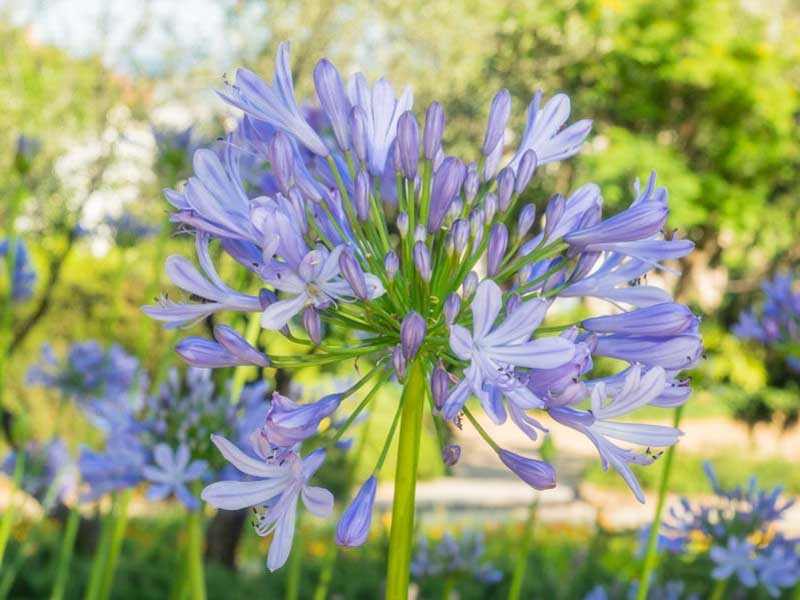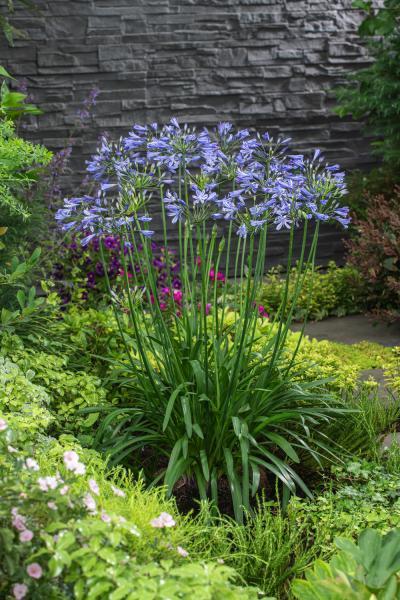How to Plant and Maintain Agapanthus in Your Garden
How to Plant and Maintain Agapanthus in Your Garden
Blog Article
Unleashing the Secret to Effective Agapanthus Growing: Advice for a Flourishing Garden
In the realm of horticulture, cultivating agapanthus effectively requires a strategic strategy that encompasses various facets of plant treatment. With cautious attention to detail, one can open the secrets to nurturing these magnificent flowers, causing a garden that prospers with charm and vibrancy. By understanding the nuances of agapanthus growing, one can produce a setting where these plants flourish and grow abundantly. In the complying with discussion, we will check out vital tips and tricks that will certainly lead you in the direction of a thriving agapanthus yard, providing understandings into best methods, soil problems, sprinkling strategies, and more.
Growing Agapanthus: Best Practices
When growing Agapanthus, proper dirt preparation is necessary for guaranteeing effective development and development of these lovely flowers. Agapanthus, frequently known as Lily of the Nile or African lily, flourishes in well-draining dirt with a slightly acidic to neutral pH degree - Agapanthus. Prior to growing, it is important to modify hefty clay soils with raw material such as garden compost or peat moss to boost water drainage and provide necessary nutrients for the plants
To plant Agapanthus, pick a place that gets full sunlight to partial shade, as this will certainly promote healthy development and plentiful flowering. Dig an opening twice the size of the plant's origin sphere and position the Agapanthus at the exact same deepness it was formerly growing. Delicately backfill the hole with soil, pressing down securely to remove any type of air pockets around the origins.
Water the newly planted Agapanthus completely and remain to keep the soil evenly moist, specifically during the plant's energetic growing season. Agapanthus. Applying a balanced plant food once a month can better support the plant's development and blooming. By complying with these ideal techniques for growing Agapanthus, you can create a stunning screen of these fascinating blossoms in your yard
Suitable Dirt Issues for Agapanthus
For optimal growth and blooming success of Agapanthus plants, making certain the soil conditions are perfect is essential. Agapanthus grows in well-draining dirt with a somewhat acidic to neutral pH degree ranging from 6.0 to 7.0. This kind of soil enables adequate water drainage, avoiding waterlogging which can cause root rot. To enhance soil drainage, consider adding raw material such as compost or peat moss when preparing the planting site. Additionally, Agapanthus likes soil that is rich in nutrients, so including a well balanced fertilizer during the growing period can promote healthy and balanced growth and dynamic flowers.

Watering and Feeding Tips
To ensure healthy and balanced development and lively blooms, correct watering and fertilizing strategies are necessary for effective Agapanthus cultivation. Agapanthus plants benefit from routine watering, especially throughout the growing season. It is suggested to water deeply as soon as a week, making certain the soil is wet but not waterlogged. Throughout heat or in pots, even more regular watering might be essential to prevent the soil from drying out entirely.
When it pertains to fertilizing Agapanthus, a well balanced fertilizer with equivalent parts nitrogen, phosphorus, and potassium can be applied in the springtime to promote healthy and balanced growth and blooming. Slow-release plant foods are ideal for offering nutrients slowly over an extensive period. Prevent over-fertilizing, as this can bring about extreme vegetation development at the expenditure of flowers.
In addition, integrating raw material like garden compost into the soil can boost nutrient degrees and improve soil structure, aiding in the total health of the Agapanthus plants. By adhering to these watering and feeding tips, gardeners can guarantee their Agapanthus plants flourish and create magnificent display screens of flowers.
Pruning and Deadheading Methods
Appropriate pruning and deadheading techniques play a critical role in maintaining the health and aesthetics of Agapanthus plants, matching the necessary practices of watering and fertilizing for successful farming. Pruning Agapanthus includes getting rid of invested blossom heads, yellowing or dead fallen leaves, and overall shaping of the plant to advertise much better development. Deadheading, the procedure of getting rid of discolored blossoms, not only boosts the plant's look but additionally encourages additional growing.
When deadheading Agapanthus, it is advisable to snip off the blossom stem at the base making use of sharp, clean shears. This process redirects the plant's energy from seed manufacturing back right into root and foliage development, advertising a healthier and much more durable plant. Routine deadheading can prolong the blooming period of Agapanthus and stop self-seeding, which can result in congestion.
In terms of pruning, Agapanthus normally take advantage of a light trim after blossoming to clean up the plant and motivate fresh growth. Cutting down the spent blossom stems and removing any type of dead or damaged vegetation helps maintain the plant's vitality and general appearance. However, it is important to avoid cutting right into the crown of the plant, as this can weaken its health and wellness.

Protecting Agapanthus From Vermins and Diseases
Carrying out effective pest and disease monitoring approaches is critical to securing the wellness and vigor of Agapanthus plants Home Page in growing. One common parasite that influences Agapanthus is the Agapanthus borer, a caterpillar that tunnels into the plant, why not check here creating damage to the fallen leaves and blossoms.
In enhancement to bugs, Agapanthus are prone to conditions such as origin rot and fungal fallen leave spots. These concerns can frequently be prevented by ensuring appropriate drain and avoiding overwatering. Affected parts of the plant must be without delay gotten rid of to avoid further spread if indicators of disease appear. Fungicides might likewise be made use of as a treatment step, following the supplier's instructions carefully. By remaining attentive and addressing insect and disease issues promptly, gardeners can help their Agapanthus grow and flourish.

Verdict
Finally, successful farming of agapanthus needs appropriate growing techniques, optimal dirt problems, appropriate watering and fertilizing, routine trimming and deadheading, and security from bugs and diseases. By complying with these techniques and pointers, gardeners can make certain a growing yard loaded with attractive agapanthus flowers. Agapanthus. Bear in mind to preserve constant care and attention to detail to advertise the health and wellness and longevity of these sensational plants
When growing Agapanthus, appropriate soil prep work is important for making sure effective development and development of these gorgeous flowers.Water the freshly grown Agapanthus extensively and proceed to keep the soil evenly wet, specifically throughout the plant's energetic growing period.For optimal growth and blooming success of Agapanthus plants, ensuring the dirt problems are excellent is essential. When planting or hair transplanting Agapanthus, ensure the dirt is well-prepared to offer the needed foundation for the plants to establish themselves efficiently. go to this website One usual bug that influences Agapanthus is the Agapanthus borer, a caterpillar that passages into the plant, triggering damage to the blossoms and leaves.
Report this page